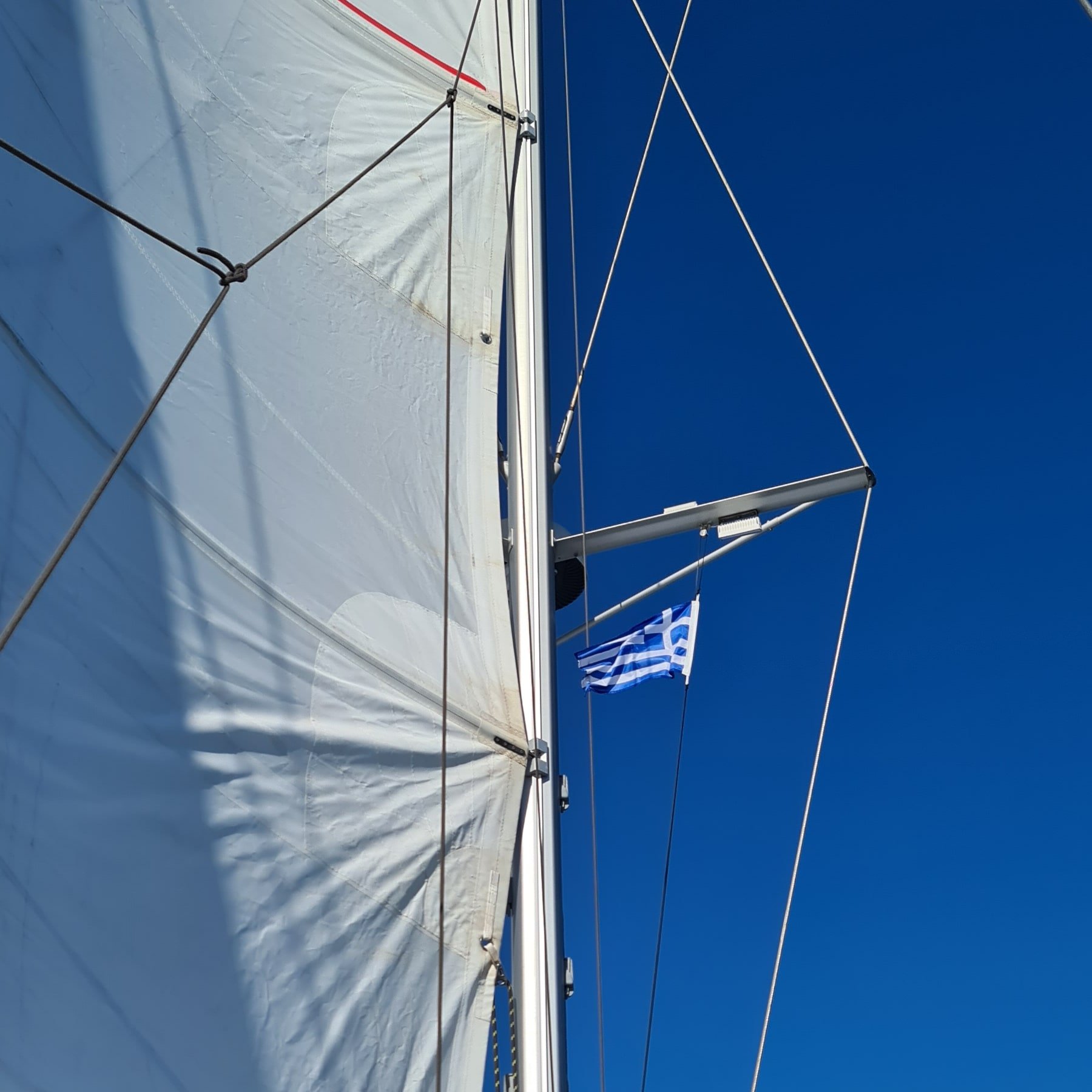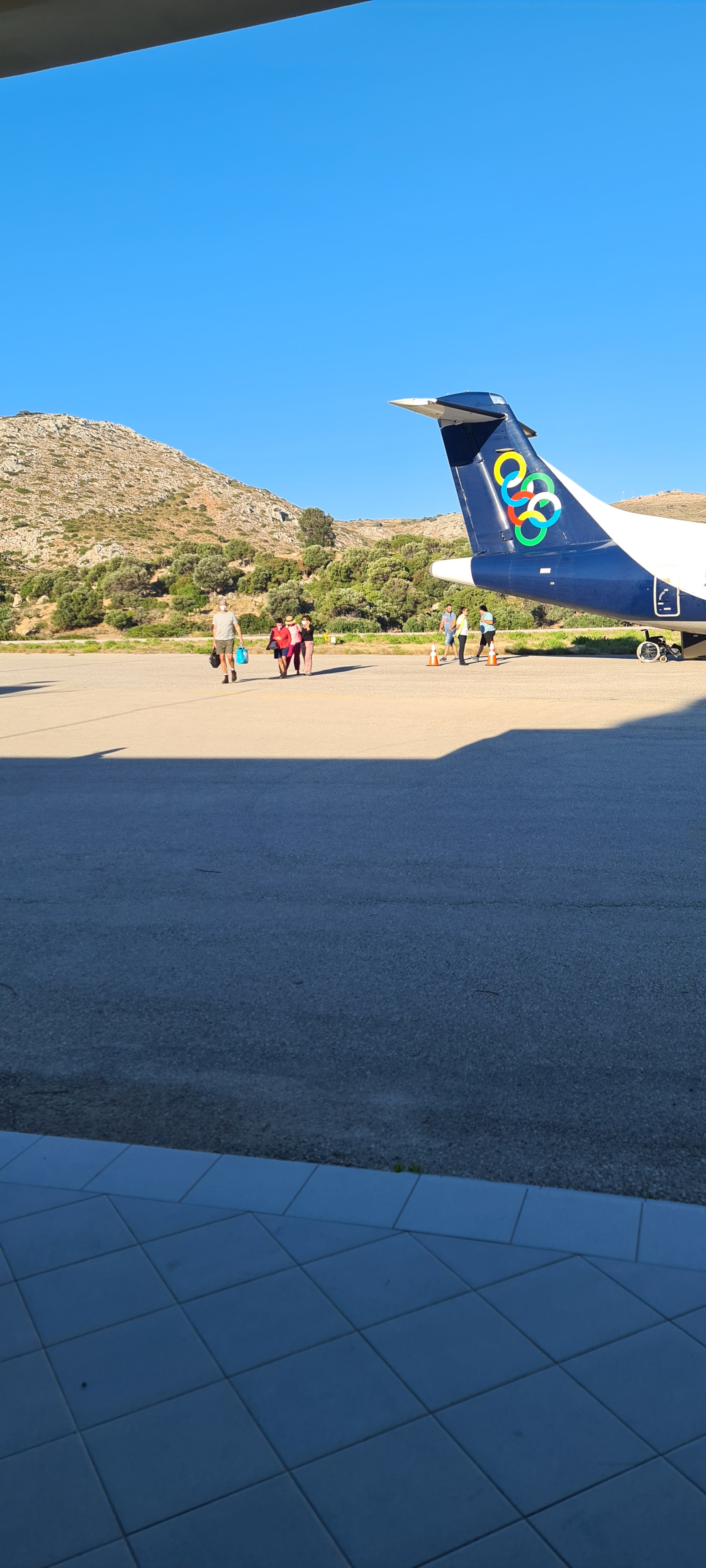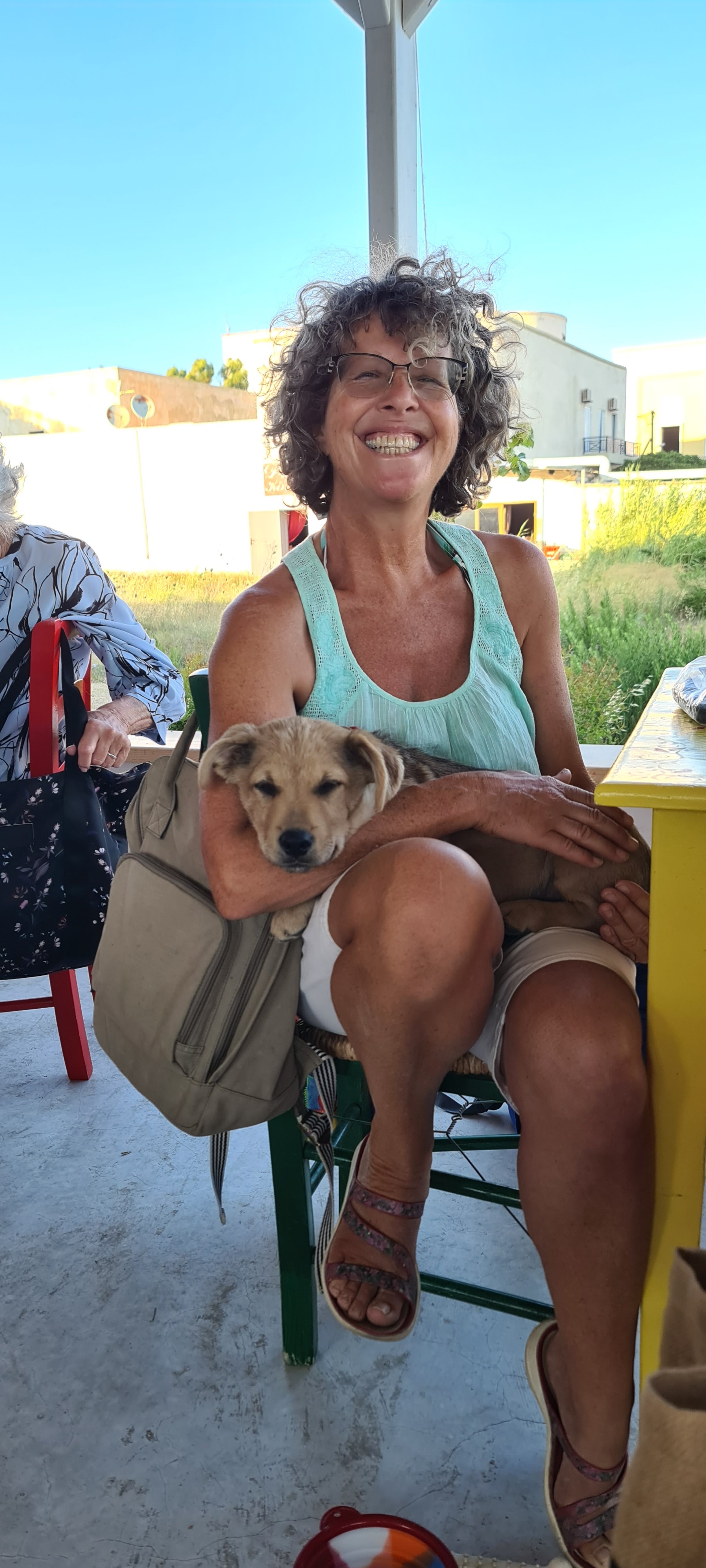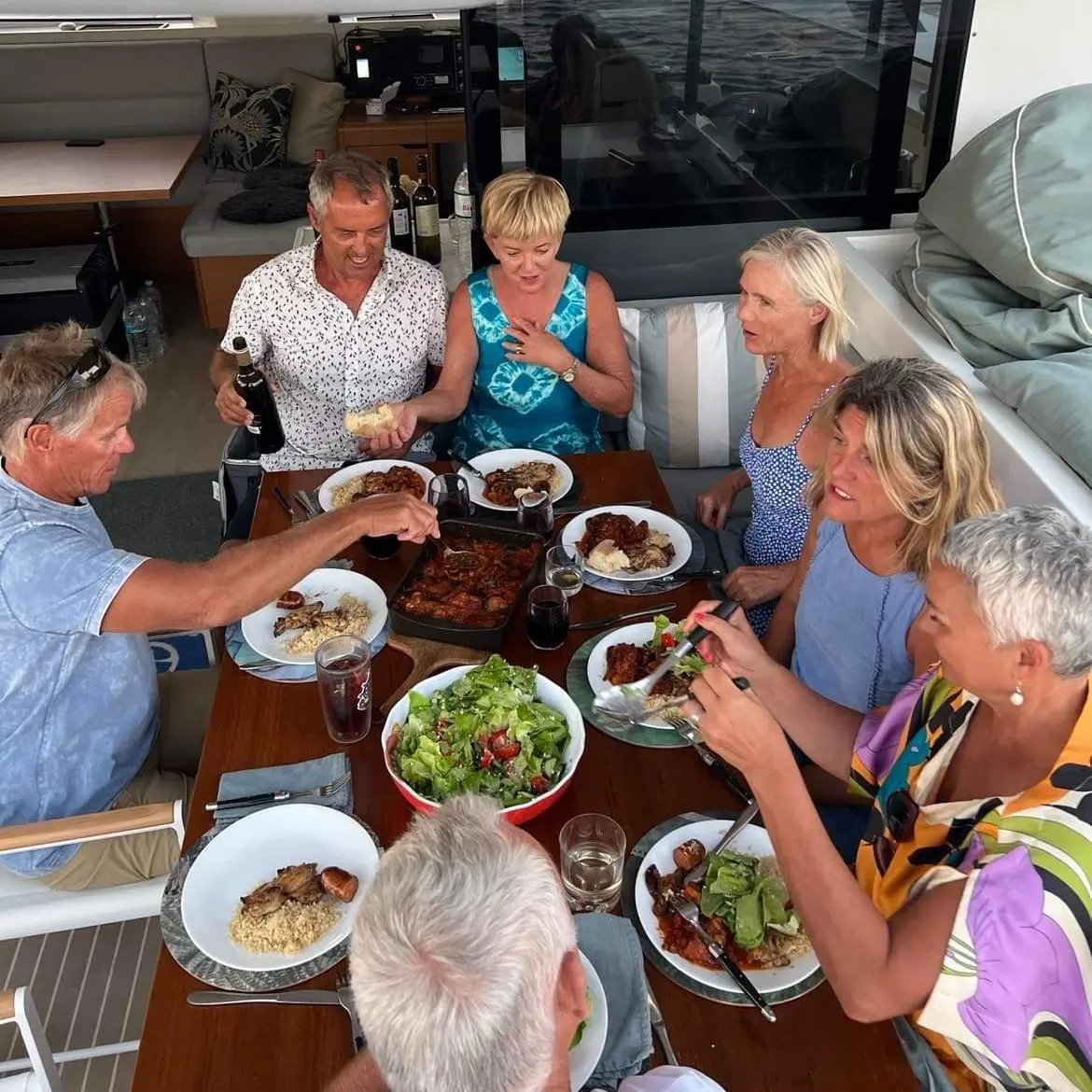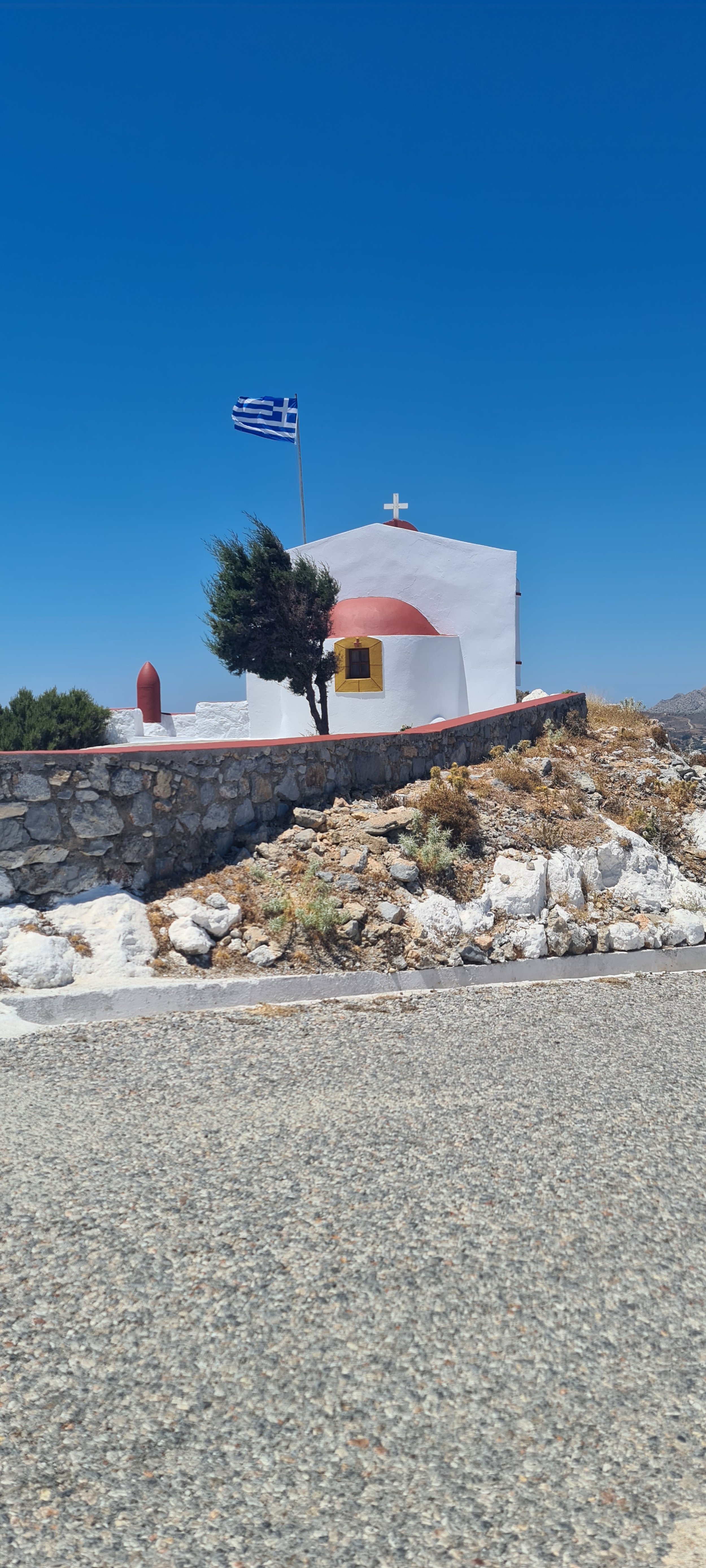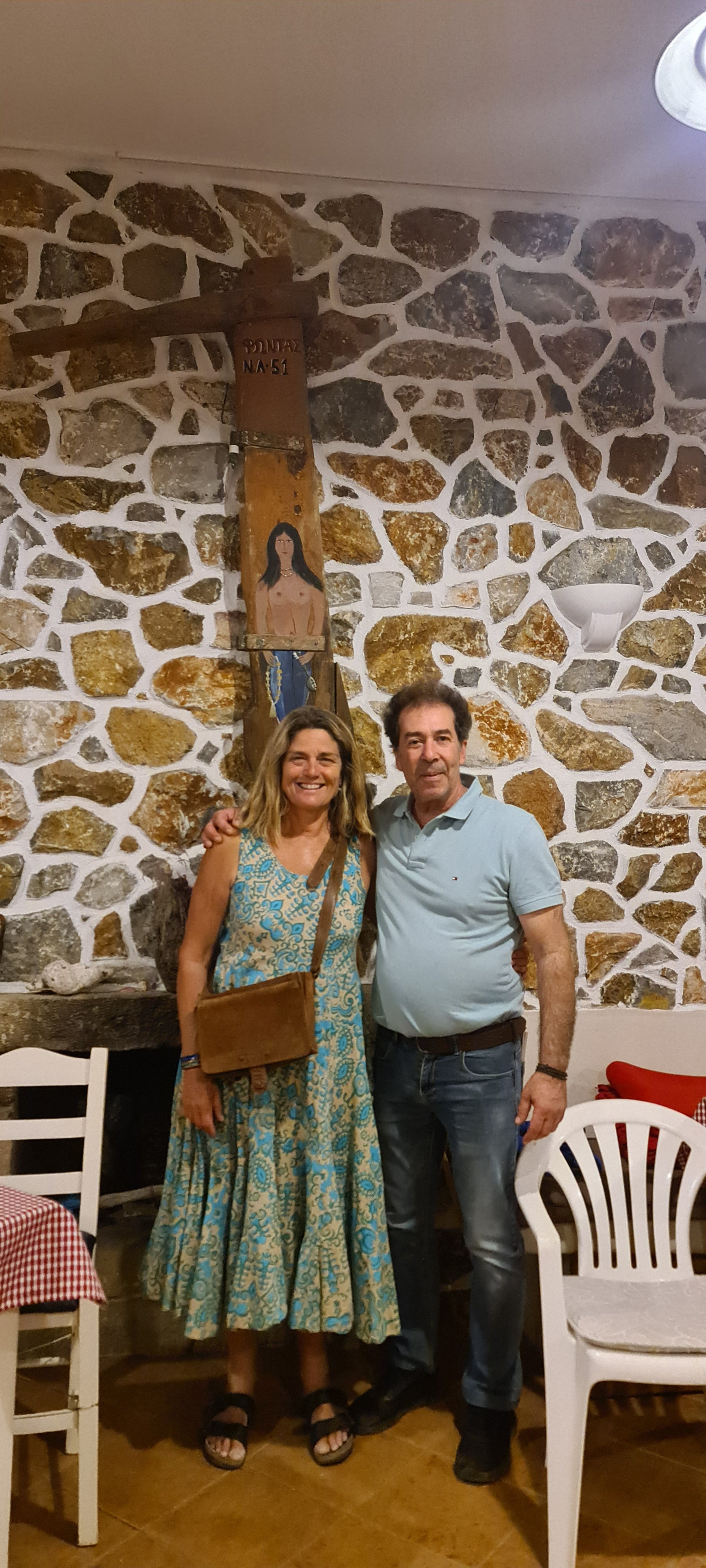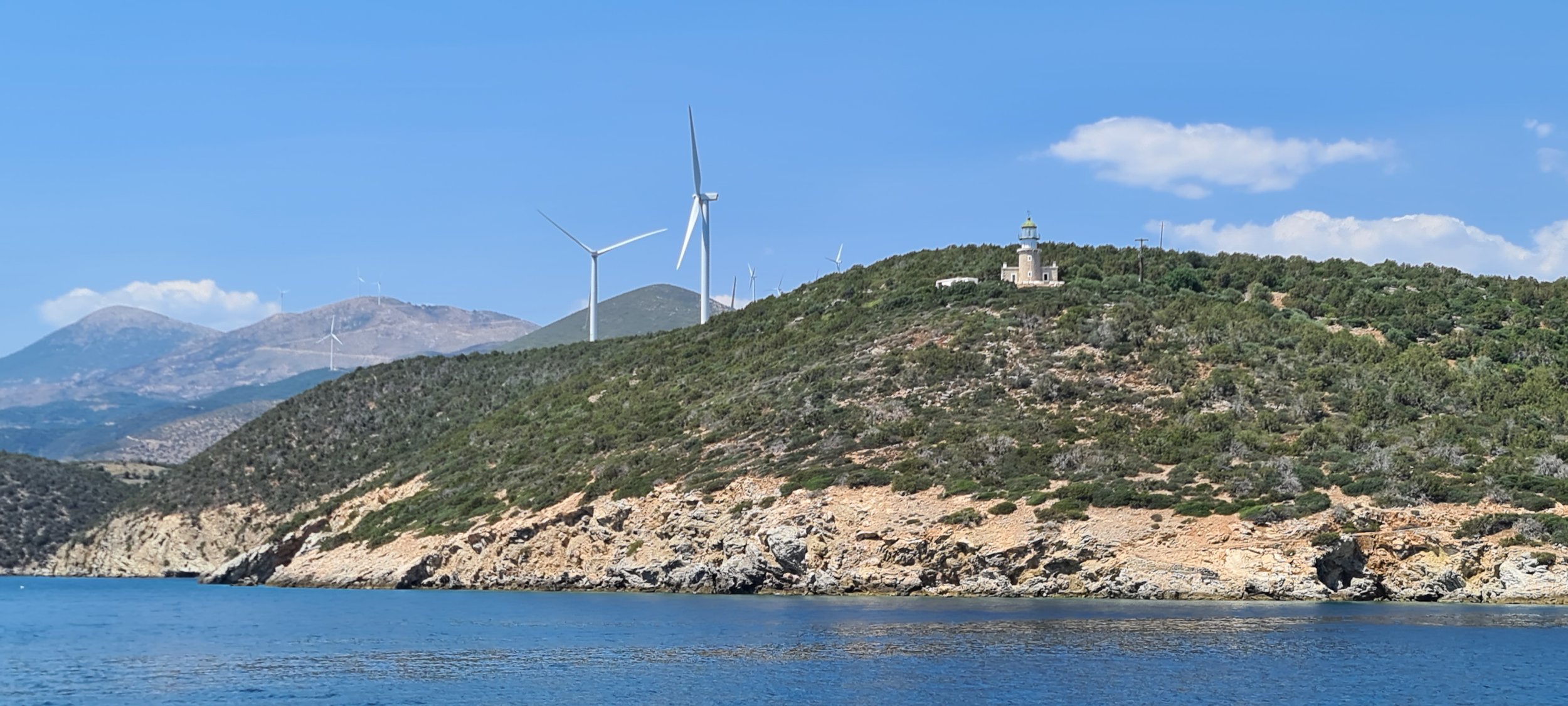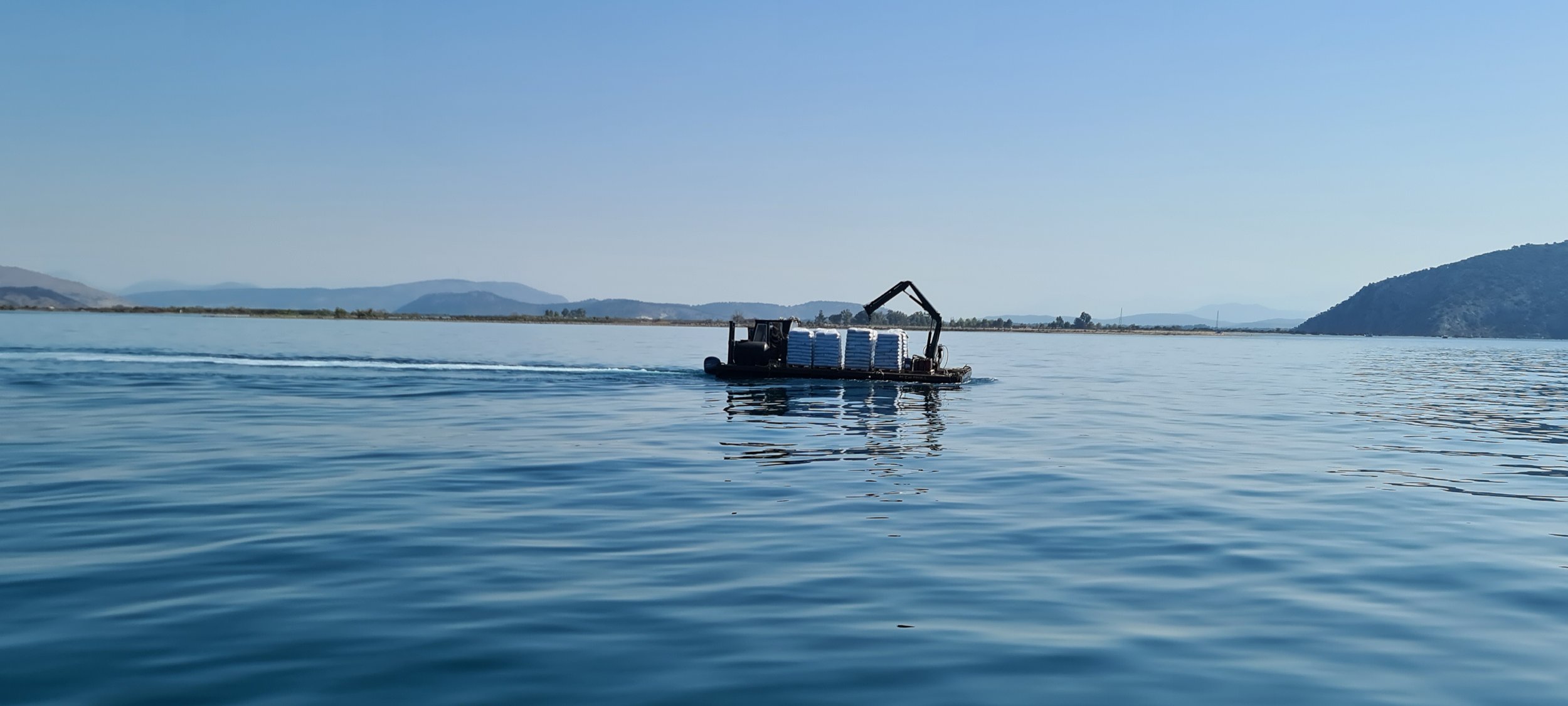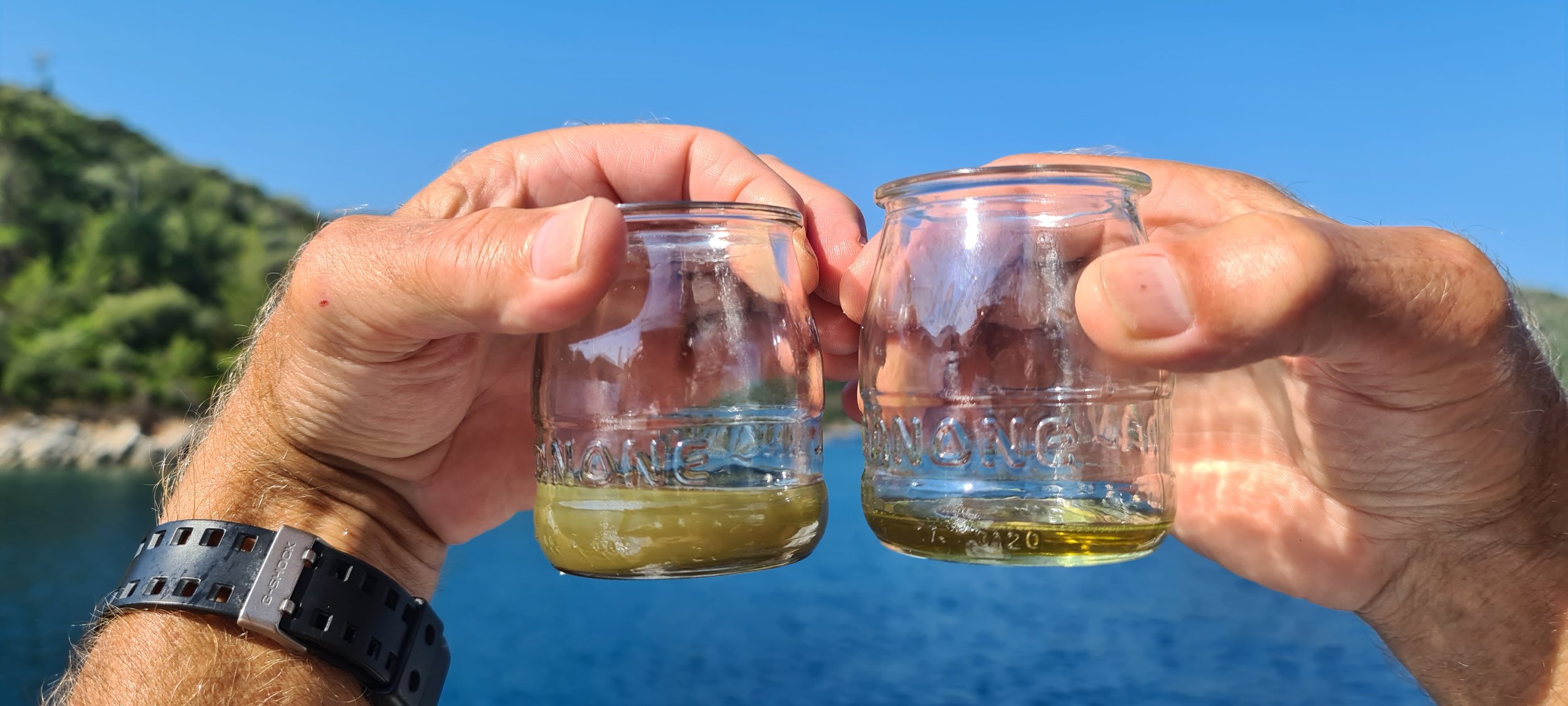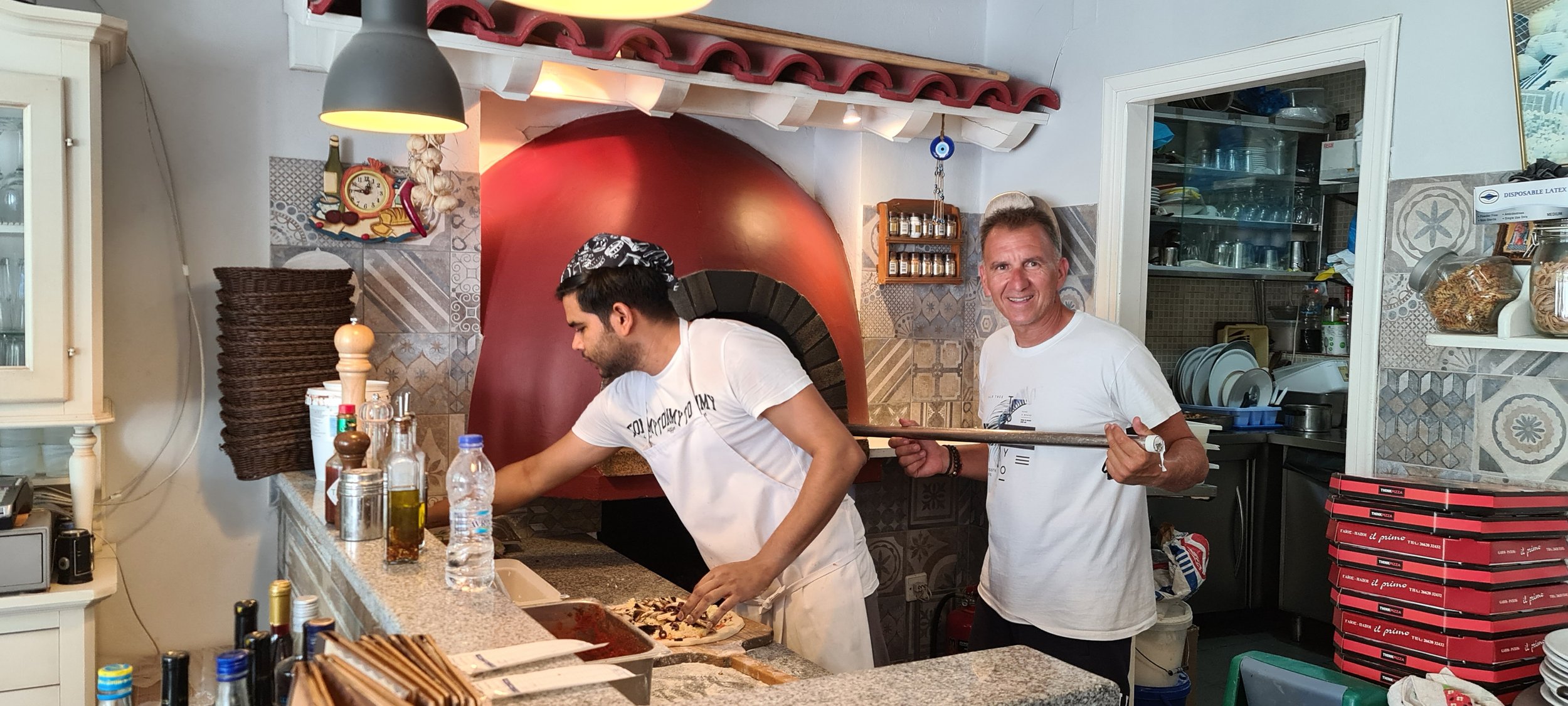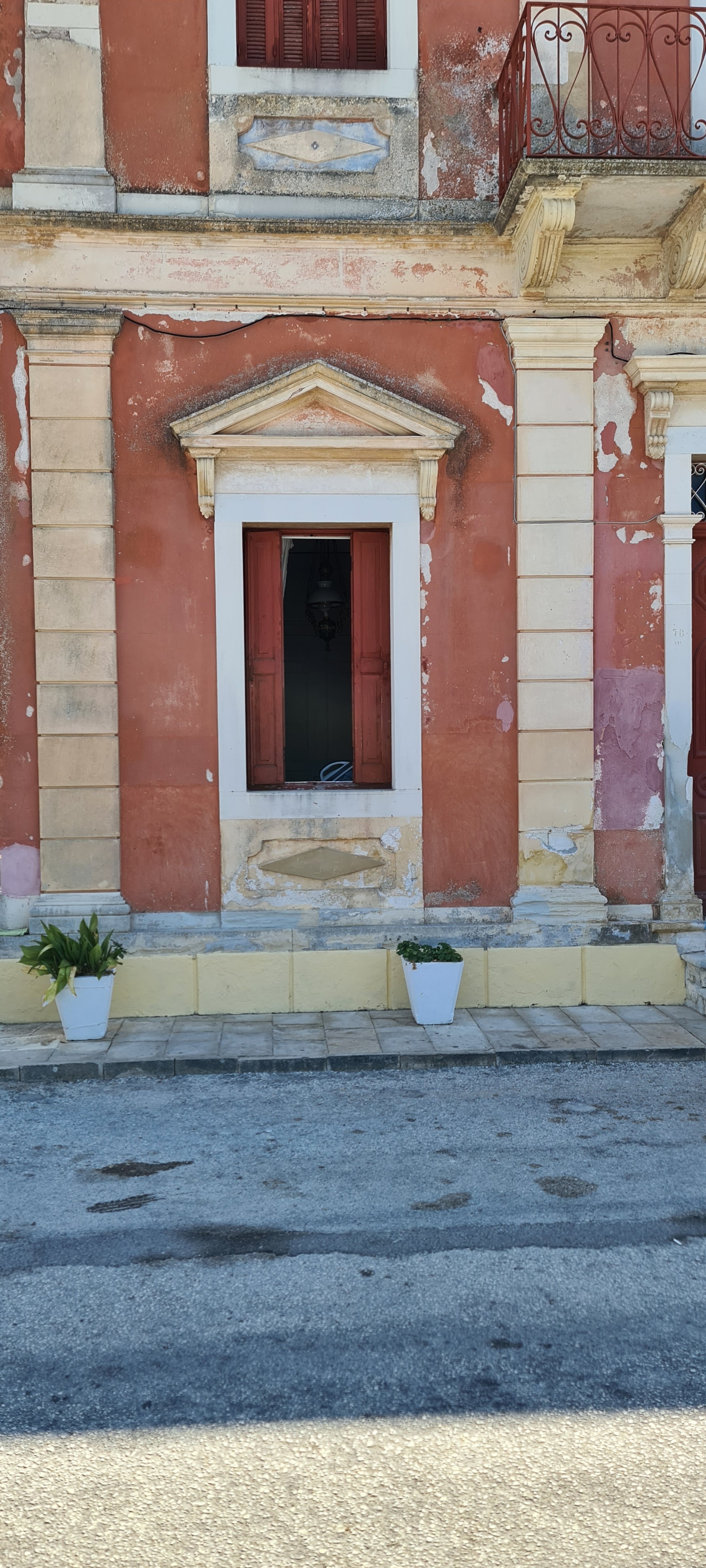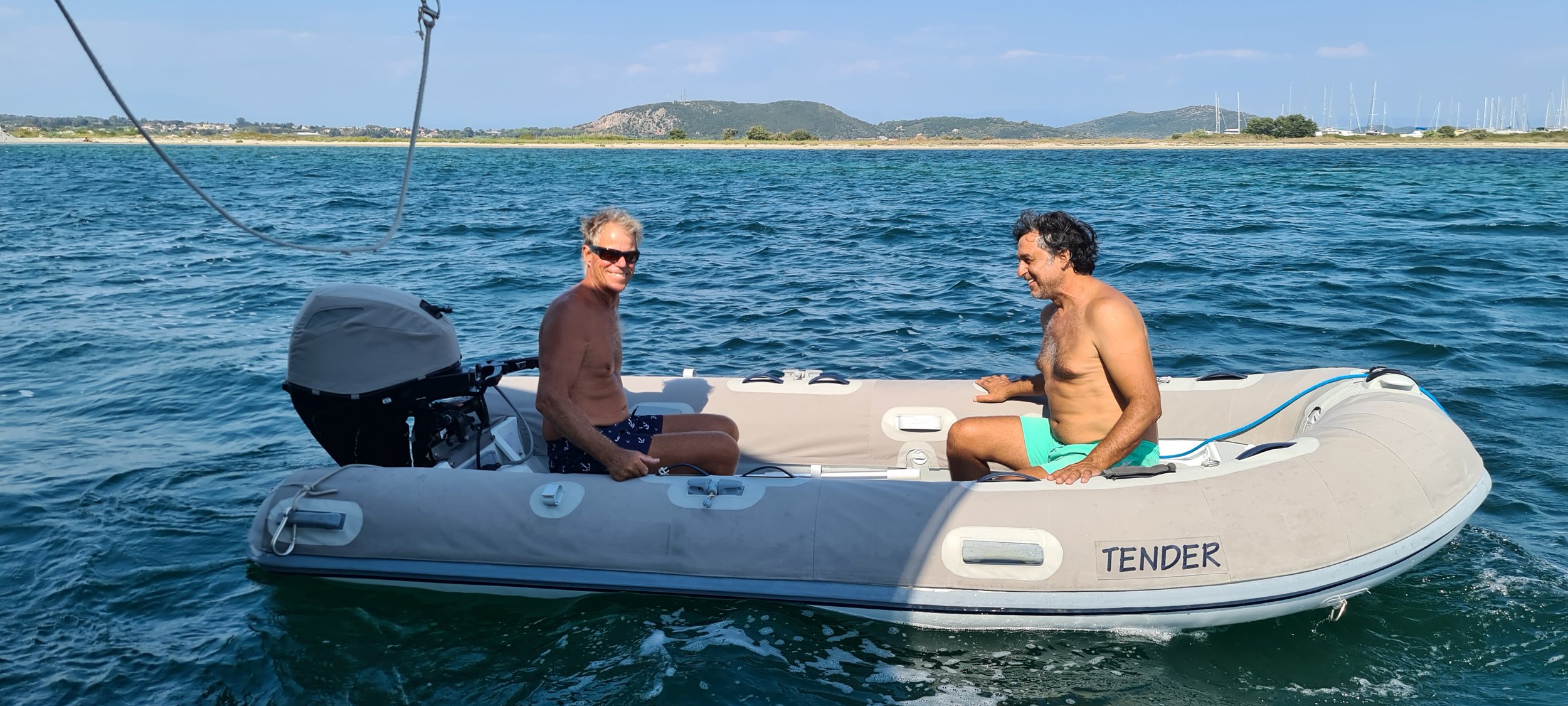Greece – Ta Léme
Our last two weeks in Greece started with four days catching up and saying goodbye in Leros, followed by four days bashing up and across the Aegean, the ever present meltimi slowly subsiding as we headed west. The morning we left was a perfect Greek morning, calm, faint ripples on the sea, a solitary fisherman, smoky grey mountains in the distance with the promise of a hot day. Leaving Leros was hard, it has been our Mediterranean home for the past four years, we have made good friends there and we know how things work. You’ll come back! Will we? as we head forever westwards, will we? Or will it fade into the background as we paint more adventures, people, and places on our sailing canvas. So lots of dinners and laughter, and some tears.
We often get asked what is your favourite Greek island and, having been to 76, some many times, we do have a reasonable selection to choose from. The answer is Leros; we have spent more time there and got know the lie of the land, the sea, and its people, and it feels like home. And for us the island just keeps on giving, the generosity of the people is humbling and there always seems to be something new to be discovered - the bays around by the old bomb shelters in Lakki, south facing, sandy coves, little tavernas, we just discovered them this year. And the bomb shelters, we did know about them but had never visited - sited in a golden drowsy pine glade it was hard to imagine the islanders hiding there in damp dark tunnels while the bombs fell. I felt so angry watching the black and white German WWII footage of the Battle of Leros, the invaders landing in Alinda then raising their flag on the castle , grrr. Leros, to know it is to love it.
And as we were saying farewell it was also a time to say hello - to finally meet up with Dona and Gavin from Waiata, and as luck would have it Piera and Jamie were also on board, friends from the 1980s and with lots of Croatia experience, it’s a small world after all..
So onwards – leaving Greece we seemed to be beset with problems, Raymarine malfunction, Volvo starboard engine high temperature reading (again), water in port sail drive oil which required us to find a mechanic and boatyard capable of helping us, getting anchor stuck in mud and chains in Levkas Canal…it was as if Greece was saying to us don’t go, stay just a little bit longer, or it could have just been that’s boat life?
Luckily, Chris has great sea legs, as leaving Leros and heading northwest to get a better angle for our westward journey we battled rough seas and on average 30 knot NNW headwinds – four days and sleepless nights. But eager to share some of our favourite spots we stopped at Makronisi Kasou for a snorkel through the underwater cave to the lagoon and then dovecote Tinos where we met a delightful local, Andreas, who regaled us with stories of how the islanders outwitted the Germans during WWII using pigeons to communicate with the resistance on Mykonos. A walk up to Panagía Evangelístria , the major Marian shrine in Greece, is obligatory and I was fascinated to observe a couple of young women crawl their way to the top, it was hot, they were dedicated. Kea, population 2,000, was new to us, we had hoped to walk up to the chora and see the lion rock sculpture, but the wind was too fierce, so we found a lovely little sheltered and secluded bay on the south coast, remnants of a fishing enterprise on shore and surprisingly no rubbish. .
Reaching the Saronic Gulf, we were sheltered briefly for a night anchored off Poros, but when we set off around the corner we realised we hadn't escaped the wind yet. On the nose and confused sea for several hours towards Aegina before heading around the top of Methana west to Agistri. Methana is a dormant volcano across the gulf from Athens, green and imposing. All of Agistri’s few anchorages were taken so with the end of the day fast approaching, it was onwards to Epidhavros.
Epidhavros, on the list, did not disappoint. There are great anchorages either side of a small headland, we chose the south side Palaia (old) Epidhavros near the ancient sunken city and from there it was an easy tender around to the new town, Néa Epidhavros and a 30 minute taxi ride past citrus orchards and marble quarries to the amphitheatre and Asklepion. Supposedly the birthplace of Apollo’s son Asklepius the healer, it was the fame and fortune of the Asklepion that enabled the construction of the theatre. Amongst warm pine and cicadas, we wandered through the Asklepion ruins and up and around the impressive still-in-use amphitheatre looking out over wooded plains and surprisingly, very few other people.
Fortunately for us the Corinth Canal reopened on July 4th for 3 months. It had been closed since Feb 2021 due to landslides and then restoration work, and although I love the Peloponnese, the canal provides a much shorter route to the Ionians, knocking about two weeks off the journey. So past Saronic Gulf fish farms and wooded bays we arrived at the canal in good time, paid our dues €312 and followed superyacht Galaxy through. 25 minutes later we entered the Gulf of Corinth, a hot mirror, pods of dolphins and no wind, another world. It took us several days of heat and stillness, passing surprisingly green hills and wind turbined ridges on the northside and large towns in the distance on the southside, before weighing anchor just outside another favourite spot, Nafpaktos, with its magnificent hilltop citadel looking down on the small, horseshoe harbour with local fishing boats. And even though I had been up to the citadel before, an early morning wander up through modern living in ancient streets, was a good opportunity to make use of Chris’s superior height to forage another batch of capers. Another day took us under the stunning Rion bridge, northern span for our 24m height to the Gulf of Patras, mudflats, and sandy inlets and out into the Ionian Sea.
Back in the Ionians, we were keen to visit islands we hadn’t been to before, so headed north through the Oxia Channel – a network of sandy shallow bays (we anchored in four metres 250-300m from shore), fishing shacks, farms, and fish food barges, via Odysseus’s Ithaka to Kalamos and Meganisi.
Unfortunately our return to Ithaka was shadowed by discovering water in our port sail drive oil, and with no idea how it got in but needing to ensure that any damage was minimised then rectified, the hunt for an Ionian marina that had the capacity to lift us out, provide Volvo assistance and be able to get spare parts within a week, began. It was frustrating and time consuming but we still managed to fit in a few new island adventures between emails and phone calls.
Kalamos, population 496. Anchoring in a lovely bay east of Porto Leone we visited the now derelict town, abandoned after an earthquake in 1953 had destroyed the water supply. It exists now as a smattering of houses, old olive trees, a restored olive press, agate rocks and a memorial church which is cleaned and used every week. Past sunset windmills we dined in Port Kalamos at George’s Restaurant - a busy, charter boat town with hungry cats, delicious food, and menu prices to match.
We had avoided Meganisi, population 1,041, in other years, tales of it being charter boat and wasp central had put us off, but we were pleasantly surprised to encounter very few of both, so stayed for several days. Firstly exploring by tender the west coast caves as far as the karst Papanikolis Cave - the second largest in Greece and where supposedly the Papanikolis submarine hid here during WWII and then the northern bays, looking across at Aristotle Onassis’s Skorpios island, dining in one of the many inleted bays and watching live Spanish flamenco dancing to Greek music. The exotic dancer and the singer who looked very much like Nana Mouskouri, were a wonderful juxtaposition.
Northwards to Lefkada and the Levkas Canal, which unfortunately was just closing (ten minutes early!) so we had to anchor and wait for an hour in the 34 degree heat. We were feeling somewhat pleased with ourselves as we watched other boats struggling to get a hold in the narrow canal, the wind gusting 25 knots. But that all changed. The reason we had such a good hold was because we had anchored in 4m mud under mooring chains close to shore. We couldn’t raise any help on the VHF so with lines ashore and back to the anchor, our fearless Captain, using our hookah dive system, managed to prise the anchor from the murky depths and we made it to the bridge opening, three hours later. Not a great day.
But I had found a marina in Prevesa, just north of the Levkas Canal, that could lift us out, provide same day Volvo service and launch us back in the same day. Prevesa also has an international airport so a perfect place to farewell Chris, his nightcap chats and generosity most appreciated.
Fun fact – Prevesa sits at the entrance of the big, shallow, muddy Ambracian Gulf, the site of the defining Battle of Actium 31 BC where Octavian defeated the forces of Mark Anthony and Cleopatra and gained the title of Augustus (revered). This signalled the end of the Roman Republic and the beginning of the Roman Empire.
Back to the story. Before liftout we needed to get up to Corfu where our Volvo parts and next crew were arriving. It is a two day sail to Corfu so Paxos was a good halfway stop and Gaios a charming town. The many day trippers and tourist shops did not diminish the beautiful architecture reflecting the years spent under Venetian, French and English rule. We shared a great pizza at back street Il Primo and caught up with Lady Roslyn for sundowner mojitos, taking advice to cruise up the west coast of Paxos, past dramatic limestone cliffs and caves to Corfu with its imposing Byzantine/Venetian fortress and medieval town. The entrance is dramatic and as you approach you realise that the fort is actually built on a small island, and what seems like a moat is actually a small gap between the fortified island and the mainland with local fishing huts and boats lining the high stone walled sides. Past the main town, anchoring near Kondokali village and the Gouvia marina was a good call, it provided easy tender access to pick up our Volvo parts, fill up fuel drums, pick up our next crew, Phillida and George, and have a beer in the humid 36 degree heat of the day.
Then it was back down to Prevesa, stopping for the night amongst a lovely group of islands off mainland Sývota and in the morning introducing P and George to Trash Tuesday (it actually was a Tuesday) - two bags in 30 minutes, helping to keep the islands lovely.
Back in Prevesa we had arranged to meet the Volvo technician for a prework seatrial. Sheltering in the heat, in the shadow of a boatyard shed we spied an amiably agitated man heading towards us, a yacht had run aground and our Volvo man, Achilles, was trying to help them – TENDER to the rescue! Our trusty tender with its 30HP motor on full throttle and a line up to the top of the mast, we pulled the aground yacht over, freeing the keel and cementing our relationship with Achilles. Then with hunger and thirst to then be assuaged we headed across the bay, opting for the back streets rather than the waterfront and chose Thanos’s Kaixis Mermaid. Thanos’s mother’s prawn tomato dish and homemade limoncello were delicious.
Next morning was liftout, so at 0800 we squeezed our 8m beam into the 8.7m slipway and NOETA was cradled up onto the hard. Achilles and his team diagnosed the problem – a barnacle had crept under the seal. A barnacle. Being prudent we replaced both seals on both sail drives and were back in the water again within four hours, good job, well done.
Then it was back up again to Corfu, stopping this time in Parga – an attractive two bay town with rocky islets, little white churches and a Norman fortress overlooking the very picturesque coves, all despite the many tourist boats and umbrella lined beaches.
Back in Corfu it was time to do another diesel and petrol run before a two hour checkout process with a very grumpy woman at the Port Authority, down the harbour to customs and passport control then back to the very grumpy woman at the Port Authority.
It was great being able to share some of Greece with Chris, P and George, to be able to see Greece afresh through their eyes, but we also felt disappointed that things didn’t go according to the rough plan, when the meltimi blew relentlessly for weeks on end, when we had to spend four days going down to and back from the only boatyard in the Ionians who could haul us out and fix us in the same day, well we felt disappointed, for them. But I suppose it gave them an insight into our way of life, it isn’t all lounging around on golden beaches with a cocktail in hand.
Ta léme Greece, see you xx
